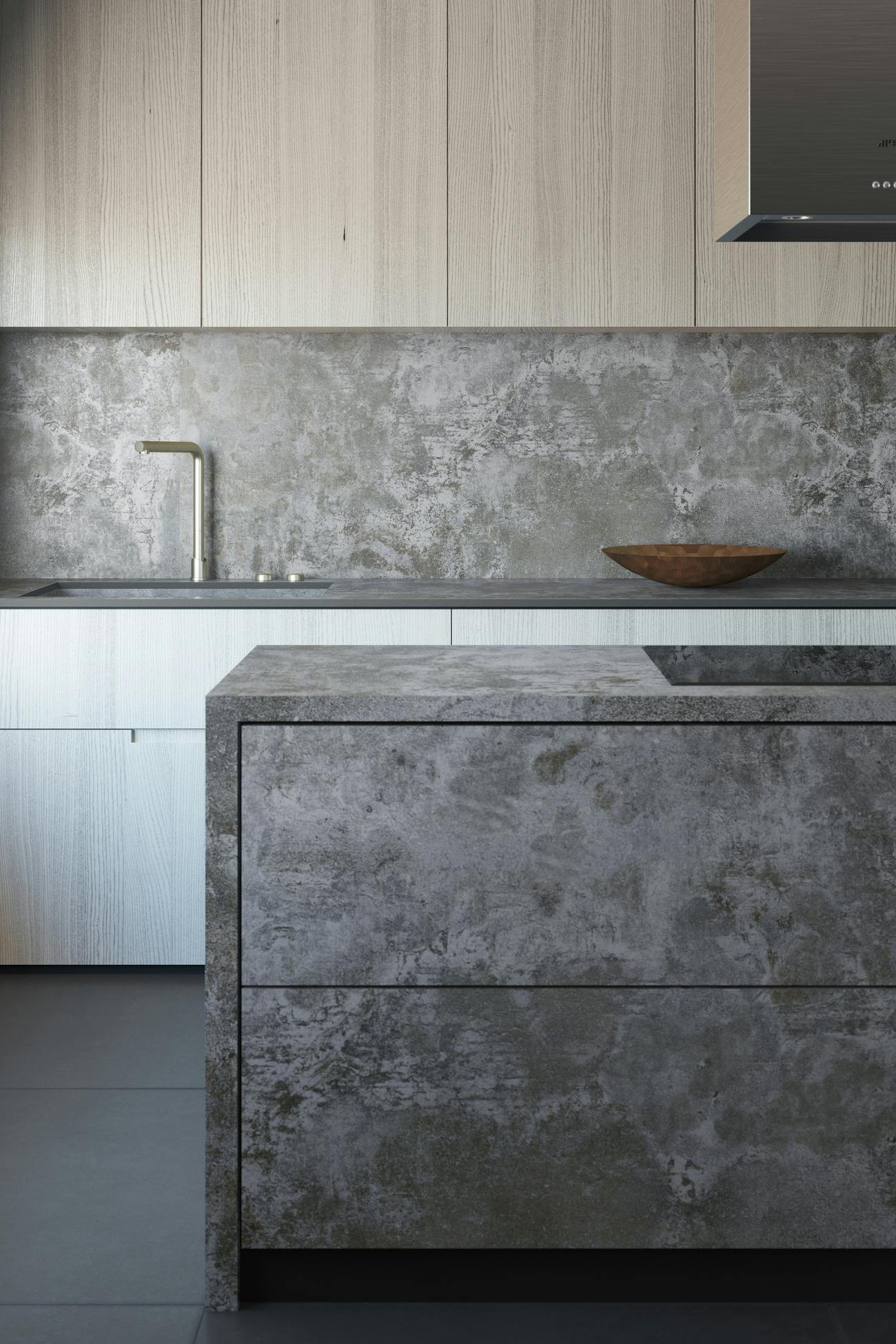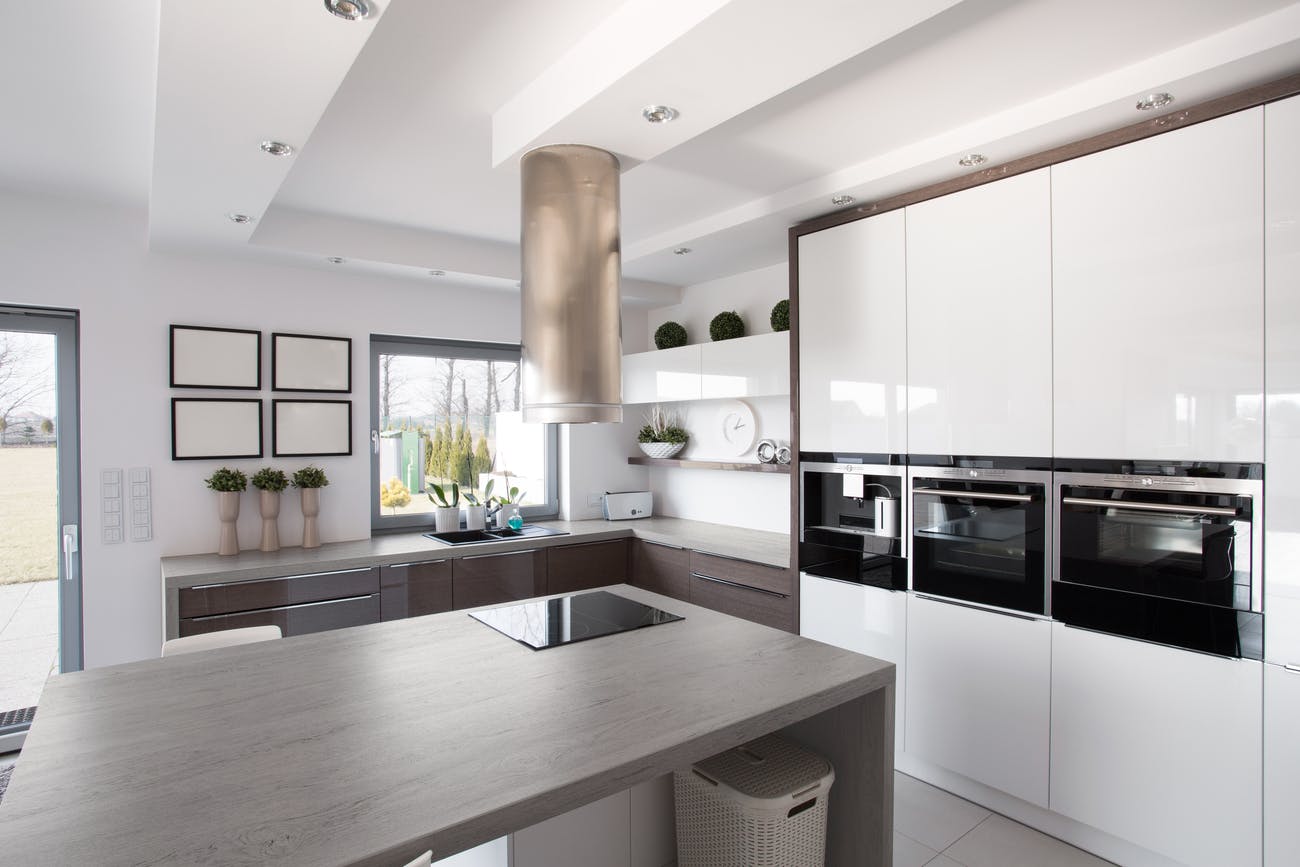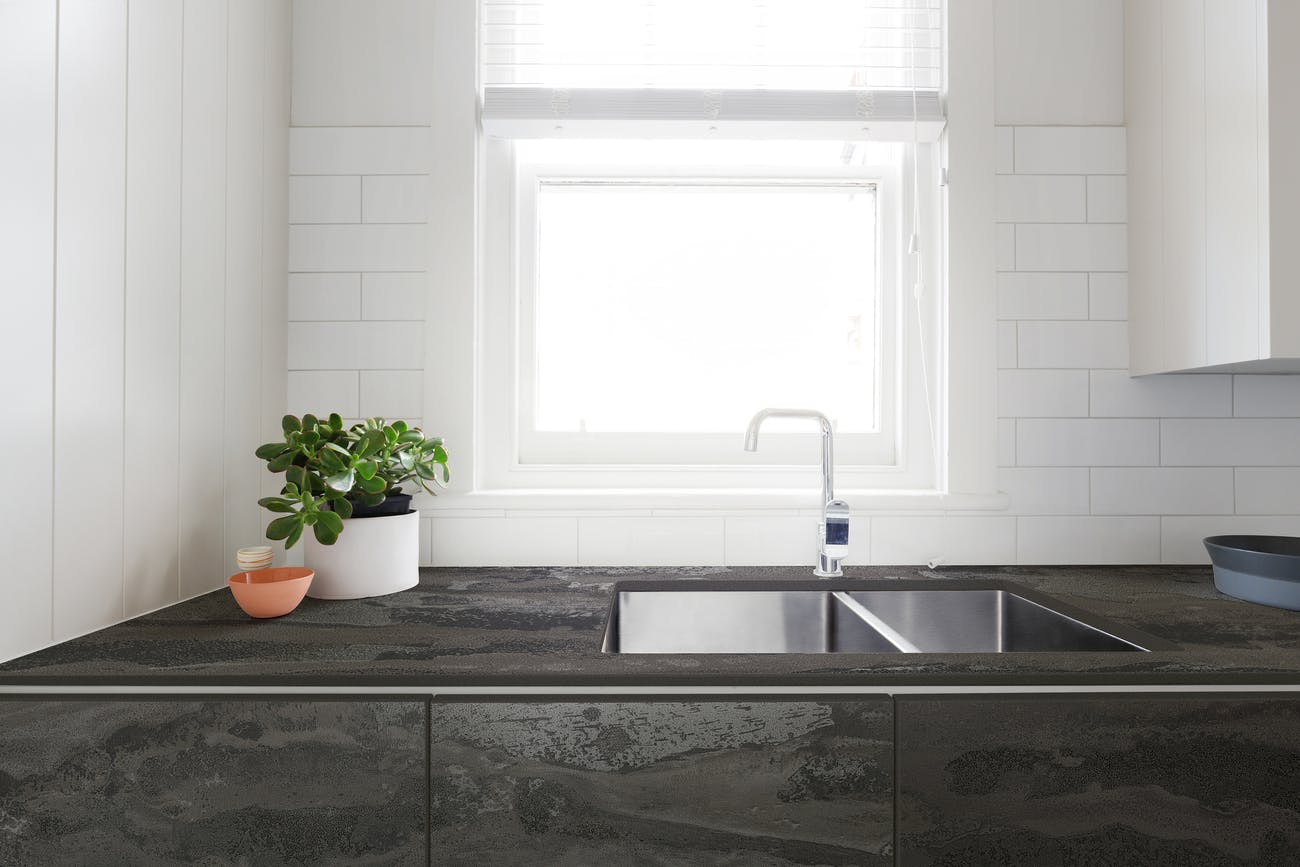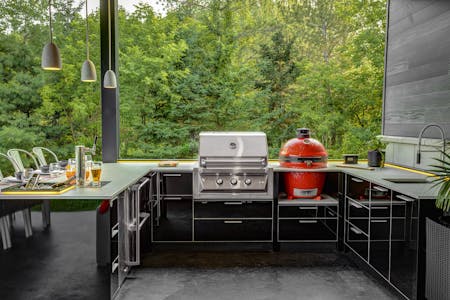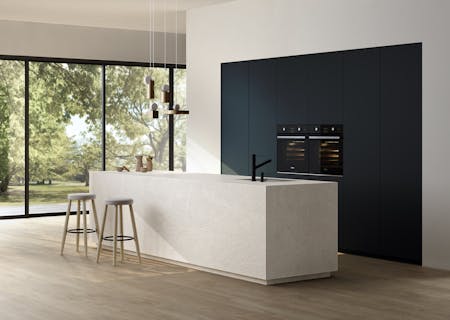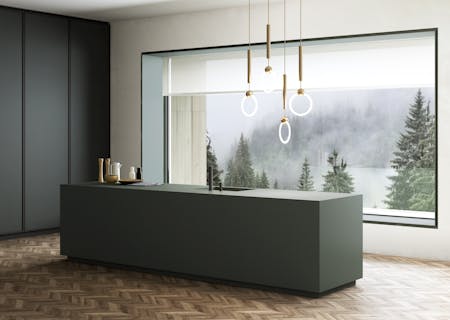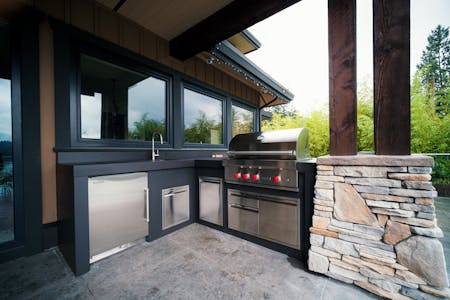
Eight Elements to Use When Designing an Industrial-style Kitchen
Tags: Kitchen, kitchen countertop, my perfect surface | 6 years ago | Written by: Cosentino
Industrial-style design made its debut in the United States during the 1950’s, when members of the creative community, including artists, painters, sculptors and designers, sought spaces which would allow them to live and work harmoniously. This brought them to abandoned factories and warehouses where living was not only affordable, but key features such as windows with natural light and ample space were well-suited to their trade.
Today, industrial-style is still a revered kitchen design trend, matching raw textural beauty with functionality and versatility. We’ve rounded up our eight “must use” elements when designing an industrial-style kitchen:
Concrete
The texture and finish of concrete has become one of the essential design elements in an industrial kitchen. Concrete’s bold, utilitarian look fits perfectly with industrial aesthetic, and can serve as a focal point in an industrial kitchen. The Dekton Industrial Collection takes the beauty of concrete and reflects it in a more forgiving and versatile surface that features a high resistance to scratches, UV, stains, fire, heat and abrasion. It can be used in multiple applications such as wall cladding, flooring and countertops.
Exposed Brick
If designing an older home, there is a good chance there may brick behind the current wall cladding. Exposing that brick and using it as a feature in the kitchen brings personality into the space. If there is no real brick in the home, there are other solutions to get this sought-after look. Choose vinyl that looks like brick or a large format image of brick as a solution.
Iron
Iron is a distinct material that complements industrial design. It can be used as an accent in the space through drawer pulls, knobs and decorative items, or as a statement piece such as bar stools or dining chairs.
Wood
Designing an industrial-style kitchen is all about balancing texture and colour between different materials and features. If the kitchen boasts concrete, stainless steel and iron, consider adding in wood to create an element of warmth. The Dekton Wild Collection offers the ultra-compact surface in colours inspired by wood, including Makai and Aldem.
Stainless Steel
Stainless steel is one of the easiest elements to bring into an industrial-style kitchen. Opting for stainless steel appliances complements other materials used in the space. To show more stainless, consider displaying on open shelving or try hanging stainless steel pots and pans above the kitchen island or on a wall.
Lighting
Industrial-style lighting is readily available and well represented by lighting manufacturers. This style of lighting is at the intersection of classic design and functionality, with features such as pulleys and scissor arms. Try hanging Edison-style pendant lights over a kitchen island to illuminate the space.
Colour
Drawing inspiration from reclaimed materials, the colour palette most often found in an industrial-style kitchen are a combination of grays, browns and blacks. To modernize a space and give it a distinct personality, try adding in muted tones of red, yellow and teal in textiles and accessories.
Existing Architectural Features
Gone are the days of covering air conditioning ducts, support beams, electric systems and pipes! In an industrial-style kitchen, existing architectural features should be revealed and brought into the design. An exposed beam or metal pipe running through the kitchen can be prominent and interesting design feature.
If you liked this article, you should check out our free guide:

